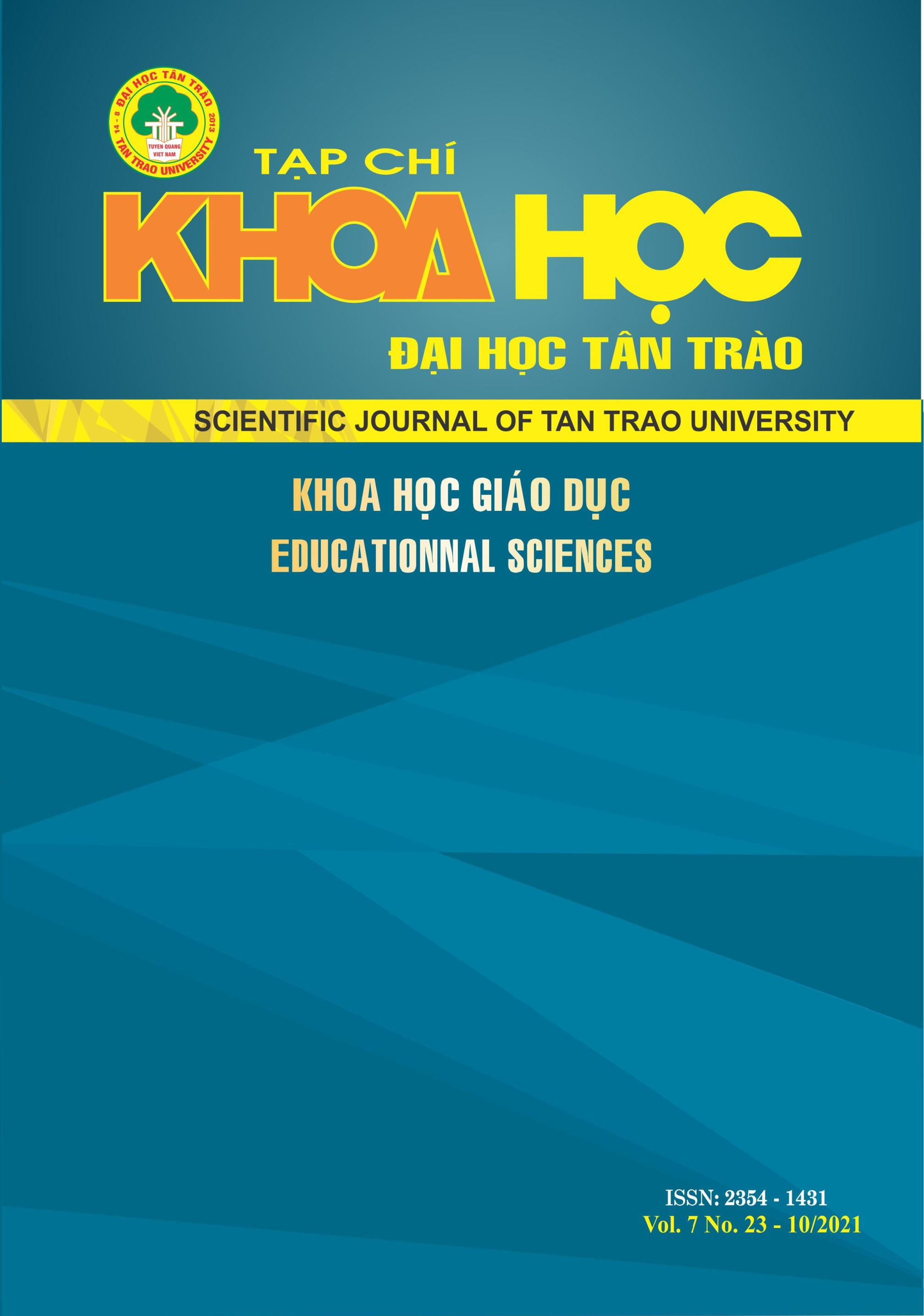VẤN ĐỀ LAO ĐỘNG PHI CHÍNH THỨC - KINH NGHIỆM Ở MỘT SỐ QUỐC GIA
DOI:
https://doi.org/10.51453/2354-1431/2021/588Từ khóa:
lao Ä‘á»™ng, lao Ä‘á»™ng phi chÃnh thức, chÃnh sáchTóm tắt
Lao động phi chính thức là thành phần lao động tồn tại tất yếu trong mọi nền kinh tế dù mức độ phát triển, tính chất và hình thức biểu hiện khác nhau. Bài viết tập trung nghiên cứu các vấn đề liên quan đến đặc điểm lao động phi chính thức của một số quốc gia và khu vực, đặc biệt là chính sách mà các quốc gia này vận dụng để ra tăng hiệu quả của lực lượng lao động và giảm thiểu những hạn chế của họ đối với nền kinh tế và các vấn đề xã hội. Các quốc gia châu Âu tập trung vào các khía cạnh lương và phúc lợi, đồng thời với điều chỉnh quản trị nhà nước, trong khi đó các nước khác như Trung Quốc hoặc Ấn Độ chủ yếu thực hiện các hoạt động hỗ trợ phúc lợi nhưng chưa có hệ thống đào tạo và bảo trợ xã hội bền vững. Đây là những kinh nghiệm quí giá có thể học tập, vận dụng và xây dựng các giải pháp tình thế và giải pháp lâu dài với vấn đề lao động phi chính thức ở Việt Nam hiện nay.
Tải xuống
Tài liệu tham khảo
[1] Bach, H. (2020). COVID-19 exposes the dangers of the informal economy. Baonghean. https://baonghean.vn/covid19-phoi-bay-moi-nguy-cua-nen-kinh-te-phi-chinh-thuc-267762.html
[2] GFCD. (2019). International Conference "Sharing on Informal Labor in Vietnam."http://gfcd.org.vn/hoi-thao-quoc-te-chia-se-ve-lao-dong-phi-chinh-thuc-o-viet-nam.html
[3] Nhi, H. (2019). India is the fastest growing economy in the world. Baothuathienhue.Vn. https://baothuathienhue.vn/an-do-la-nen-kinh-te-dang-phat-trien-nhanh-nhat-the-gioi-a72524.html
[4] International Labour Organization (ILO). (2005). INFORMAL ECONOMY : The Growing Challenge For Labour Administration.
[5] International Labour Organization (ILO). (2012). Informal economy in China and Mongolia. https://www.ilo.org/beijing/areas-of-work/informal-economy/lang--en/index.htm
[6] Oanh, K. (2021). Getting over the COVID-19, China's economic picture is even brighter. https://vneconomy.vn/buoc-qua-covid-19-buc-tranh-kinh-te-trung-quoc-cang-ruc-ro-20210121123430684.htm
[7] Liang, Z., Appleton, S., Song, L. (2016). Informal Employment in China: Trends, Patterns and Determinants of Entry. In IZA Discussion Paper (Issue 10139).
[8] Long, P. (2020). Unemployment is hard to measure: China's "black swan" https://tuoitre.vn/so-nguoi-that-nghiep-kho-do-dem-thien-nga-den-cua-trung-quoc-20200511142747277.htm
[9] Vinh, Q. (2020). India heavily suffered by COVID-19.
Consosukien.Vn. http://consosukien.vn/kinh-te-an-do-hung-chiu-suc-ta-n-pha-nang-ne-tu-covid-19.htm
[10] Srija, A., Shirke, S. V. (2014). An Analysis of the Informal Labour Market in India. In Special Feature (Confederation of Indian Industry): Vol. September- (pp. 40–46). http://www.ies.gov.in/pdfs/CII EM-october-2014.pdf
[11] Swider, S. (2015). Building China : Informal Work and the New Precariat Building China : Informal Work and the New Precariat.
[12] The World & Vietnam Report. (2020). China's economy is about to undergo changes not seen in the past 100 years, https://baoquocte.vn/kinh-te-trung-quoc-sap-co-nhung-thay-doi-chua-tung-thay-trong-100-nam-qua-128234.html
[13] Vietnam News Agency. (2020). India becomes the 5th largest economy in the world. Tuoitre.Vn.https://tuoitre.vn/an-do-tro-thanh-nen-kinh-te-lon-thu-5-the-gioi-20200219152059993.htm
[14] Vietnam Trade Office in India. (2021). India's economy decreased by 23.9% in the first quarter of fiscal year 2020-2021. https://moit.gov.vn/web/guest/tin-chi-tiet/-/chi-tiet/kinh-te-an-đo-giam-23-9-trong-quy-i-nam-tai-chinh-2020-2021-20407-22.html
[15] Luu, T. (2020). The guidelines and policies in China's socio-economic recovery and development in 2020. https://www.tapchicongsan.org.vn/the-gioi-van-de-su-kien/-/2018/820712/chu-truong%2C-chinh-sach-khoi-phuc-va-phat-trien-kinh-te---xa-hoi--cua-trung-quoc-nam-2020.aspx
[16] Wayne, M. Morison. (2019). China’s Economic Rise: History, Trends, Challenges, and Implications for the United States. https://www.everycrsreport.com/files/20190625_RL33534_088c5467dd11365dd4ab5f72133db289fa10030f.pdf
Tải xuống
Đã Xuất bản
Cách trích dẫn
Số
Chuyên mục
Giấy phép

Tác phẩm này được cấp phép theo Giấy phép Quốc tế Creative Commons Attribution-ShareAlike 4.0 .
Bài báo được xuất bản ở Tạp chí Khoa học Đại học Tân Trào được cấp phép theo giấy phép Ghi công - Chia sẻ tương tự 4.0 Quốc tế (CC BY-SA). Theo đó, các tác giả khác có thể sao chép, chuyển đổi hay phân phối lại các bài báo này với mục đích hợp pháp trên mọi phương tiện, với điều kiện họ trích dẫn tác giả, Tạp chí Khoa học Đại học Tân Trào và đường link đến bản quyền; nêu rõ các thay đổi đã thực hiện và các nghiên cứu đăng lại được tiến hành theo cùng một bản quyền.
Bản quyền bài báo thuộc về các tác giả, không hạn chế số lượng. Tạp chí Khoa học Tân Trào được cấp giấy phép không độc quyền để xuất bản bài báo với tư cách nhà xuất bản nguồn, kèm theo quyền thương mại để in các bài báo cung cấp cho các thư viện và cá nhân.
Mặc dù các điều khoản của giấy phép CC BY-SA không dành cho các tác giả (với tư cách là người giữ bản quyền của bài báo, họ không bị hạn chế về quyền hạn), khi gửi bài tới Tạp chí Khoa học Đại học Tân Trào, tác giả cần đáp ứng quyền của độc giả, và cần cấp quyền cho bên thứ 3 sử dụng bài báo của họ trong phạm vi của giấy phép.






